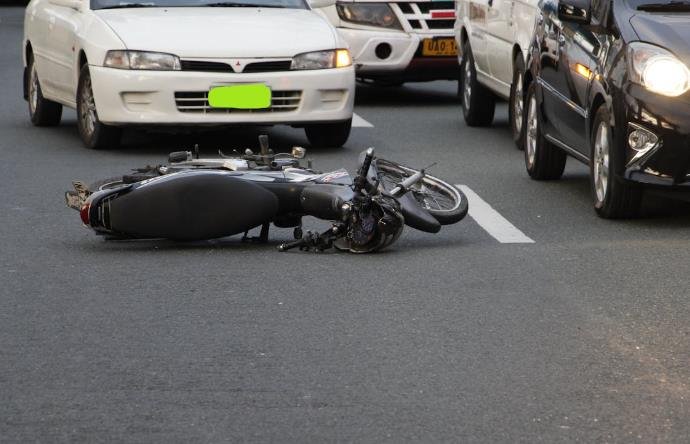Riding a motorcycle in Colorado is dangerous, and when a crash happens, the outcome can be devastating. Beyond the physical injuries, riders are left wondering what comes next. Who pays the medical bills? How does the insurance process work? What role does the police report play?
These questions often come at a time when riders are at their weakest. They may be in pain, confused, or even facing pressure from an insurance adjuster. This article breaks down what really happens after a motorcycle crash, from the chaotic first moments at the scene to the long road through medical care, paperwork, and even the courtroom. By understanding each step, riders can better protect themselves, their families, and their legal rights.
Contacting Emergency Services Without Delay
Calling 911 is the very first step after a crash, and it cannot be skipped. Some riders hesitate because they think their injuries are minor or that calling will take too much time. That decision can come back to haunt them later. Even injuries that seem small can worsen in the hours or days that follow. Paramedics are trained to evaluate trauma and spot symptoms that riders may miss.
Dispatchers will ask about the location, the number of vehicles involved, and whether anyone is injured. Answering these questions clearly helps first responders arrive prepared. In Colorado, calling emergency services also ensures that police respond and file a report. That report becomes a key piece of evidence later, so making the call is not just about health—it is also about protecting legal rights.
Once the initial emergency is under control, the next step should be considering legal help. This is where Rider Justice comes in.
With decades of experience handling motorcycle accident claims, their team understands both the law and the realities riders face on the road. Rider Justice consists of dedicated motorcycle lawyers who fight to protect injured riders from unfair treatment and ensure they get the compensation they deserve.
Why the Police Report Matters More Than You Think
Police officers in Colorado are trained to document crash scenes carefully. They note the time, weather, road conditions, and statements from both drivers. They may include a diagram of the scene and even issue citations. All of this becomes part of the official record.
For riders, the report can work for or against them. If the officer makes an error—like misjudging speed or overlooking a key detail—that mistake could weaken the case. Riders have the right to request a copy of the report and review it. If there are problems, they can ask for corrections or add clarifying statements. Taking this step early prevents disputes later in the legal process.
Medical Documentation Beyond the ER Visit
The emergency room is usually just the beginning of medical care after a crash. Follow-up appointments, physical therapy, or even surgery may come later. These visits do more than treat injuries. They also create a medical record that links the harm directly to the accident.
Insurance companies often look for gaps in treatment to argue that the injuries were not serious or not related to the crash. Skipping doctor visits or failing to follow medical advice can damage a claim. Riders should keep every appointment, save bills, and maintain records of prescriptions and therapies. These details are vital when it comes time to calculate fair compensation.
Talking to Insurance Companies After the Crash
Once the immediate medical needs are handled, riders usually hear from insurance companies. Adjusters often call within days, sometimes even while the rider is still recovering. Their job is to save money for the company, not to protect the injured person. They may ask recorded questions, request signed statements, or suggest quick settlements.
In Colorado, riders are not required to give detailed recorded statements right away. Saying too much early can be risky. For example, even a small apology can later be twisted into an admission of fault. Insurance companies also try to downplay injuries, claiming that medical care is unnecessary or excessive. Riders should provide only the basic facts until they have legal advice. Anything beyond that can wait.
The Investigation Phase That Builds the Case
Once a lawyer is involved, the investigation begins. This step is about building a solid foundation for the claim. Attorneys often work with accident reconstruction experts who can analyze skid marks and vehicle damage to recreate how the crash happened. In some cases, nearby surveillance cameras or dashcams provide crucial footage.
Witness interviews also happen during this stage. A clear and consistent story from bystanders can support the rider’s account and counter false claims from the other driver. Medical experts may review injuries and give professional opinions about how the crash caused them. This thorough investigation ensures that when it comes time to negotiate or go to court, the case rests on strong evidence instead of assumptions.
Settlement Negotiations Before Trial
Most motorcycle accident cases do not end up in a courtroom. Instead, they are resolved through settlement negotiations. During this stage, the injured rider’s lawyer presents the evidence, medical costs, lost income, and pain and suffering to the insurance company. The insurer then makes an offer, which is often too low at first.
Negotiations can go back and forth for weeks or even months. The goal is to reach a fair amount that covers both current and future expenses. If the offer is reasonable, accepting it avoids the stress and time of a trial. If not, the lawyer prepares to take the case to court. Riders should never feel pressured into settling quickly. A rushed agreement often leaves them without enough money to cover long-term care or financial losses.
What to Expect Inside the Courtroom
When settlement talks fail, the case moves to trial. Many riders feel nervous about this step, but knowing what to expect helps. In Colorado courts, the process usually starts with jury selection. Lawyers then present opening statements, followed by witness testimony, expert analysis, and cross-examinations. Medical professionals may testify about injuries, while accident experts explain how the crash occurred.
The rider’s attorney uses all of this to show fault and damages. The defense lawyer, often hired by the insurance company, tries to argue the opposite. After both sides present their evidence, the jury makes a decision. If the verdict favors the rider, compensation may cover medical bills, lost wages, future care, and pain and suffering. While trials take more time, they sometimes result in much higher awards than early settlements.
Motorcycle accidents in Colorado leave riders facing more than just physical injuries. They also face a confusing process that involves emergency response, medical care, insurance calls, legal deadlines, and sometimes even a trial. Each step plays a major role in whether the rider receives fair compensation.
By understanding what happens from the crash scene to the courtroom, riders can make informed decisions instead of reacting under pressure. Knowing the importance of medical records, legal representation, and strong evidence helps prevent mistakes that weaken a claim. With the right support, riders can focus on recovery while their case is handled with care.



